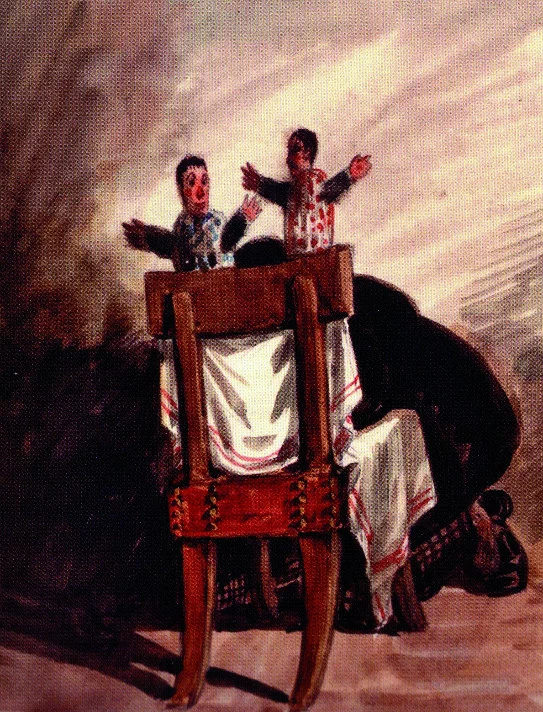A must-see
article | Reading time5 min
A must-see
article | Reading time5 min
Discover Nohant's two theaters: one called "des acteurs vivants" (or grand theater), the other devoted to puppet shows. An activity that started out as informal family fun to occupy long winter evenings!
The birth of this practice began in 1846 in the salon, in the form of pantomimes with Frédéric Chopin at the piano, as the occupants of the house mimed scenes and danced comic ballets to entertain themselves and occupy the winter evenings.
As the living room was not the most suitable place for this activity, the stage area varied within the large residence, moving from one empty room to another... before major renovations in 1851, when a relatively large stage, backstage area and auditorium with seating for 50 spectators were installed! The practice became more professional, and Nohant became a testing ground for the plays George Sand proposed to Parisian theater directors. The writer wrote the scripts(150 performances, or 31 plays, 22 of which were performed in Paris), Alexandre Manceau directed the troupe, and Maurice Sand and Eugène Lambert built the sets.
George Sand's theater saw all kinds of performances: pantomimes, plays sometimes improvised the night before for the next day, much more dense plays, worked on, directed, rehearsed, plays written for Nohant.
George Sand and her family created posters showing the title of the play to be performed on a particular evening, as well as the cast. Maurice Sand, for his part, spent years drawing the actors in costume; the Bibliothèque nationale de France holds two albums containing several hundred of his drawings of the actors at the Nohant theater. Some of these drawings are reproduced in a rare work published in 1930 by Maurice's daughter Aurore Sand: Le Théâtre de George Sand.
In 1863, Alexandre Manceau and George Sand left Nohant for Palaiseau, bringing an end to the practice of "live actors".
© Benjamin Gavaudo / Centre des monuments nationaux
The puppet theater was the brainchild of Maurice Sand and his friend Eugène Lambert. They begin their theatrical practice:
The machinery soon improved, and a castelet was built in 1849. Maurice Sand invented scenarios, carved the characters' faces in wood and created special effects. Eugène Lambert helped build the sets, and George Sand designed the costumes for these girdle puppets that reflect society and imaginary characters.
Over the course of 30 years, more than 100 puppets were made .A permanent exhibition dedicated to puppets, sets and accessories is freely accessible on the second floor of the reception building.
© Maison George Sand / Centre des monuments nationaux
© Colombe Clier / Centre des monuments nationaux
©Colombe Clier / Centre des monuments nationaux
© Christophe Loiseau / Centre des monuments nationaux
© Christophe Loiseau / Centre des monuments nationaux
© Pascal Lemaître / Centre des monuments nationaux
© David Bordes / Centre des monuments nationaux
© Pascal Lemaître / Centre des monuments nationaux
© Pascal Lemaître / Centre des monuments nationaux













